It can seat four people, in a squeeze, and weighs a little under 800kg without fuel or its passengers. It has a maximum speed of 140mph (226km/h), though you could push this up to 185mph at a pinch – but the manufacturer would rather you didn’t. And on a tank full of fuel, you could travel 800 miles (1,290km) – the equivalent of going from Berlin to Belfast, or New York to Madison, Wisconsin.
You might think this was a high-performance car with a little more-than-average leg room – but it’s a plane. The Cessna 172, which first rolled off the production line in 1956, is still in production today. And if any design could claim to be the world’s favorite aircraft, it’s the 172.
More than 43,000 Cessna 172s have been made so far. And while the 172 (also known as the Skyhawk) has undergone a myriad of tweaks and improvements over the past 60-odd years, the aircraft essentially looks much the same as it did when it was first built in the 1950s.
More pilots over the years have earned their wings in a 172 than any other aircraft in the world – Doug May, Textron Aviation
In the past 60 years, Cessna 172s have become a staple of flight training schools across the world. Generations of pilots have taken their first, faltering flights in a Cessna 172, and for good reason – it’s a plane deliberately designed to be easy to fly, and to survive less-than-accomplished landings.
“More pilots over the years have earned their wings in a 172 than any other aircraft in the world,” says Doug May, the vice-president of piston aircraft at Cessna’s parent company, Textron Aviation.
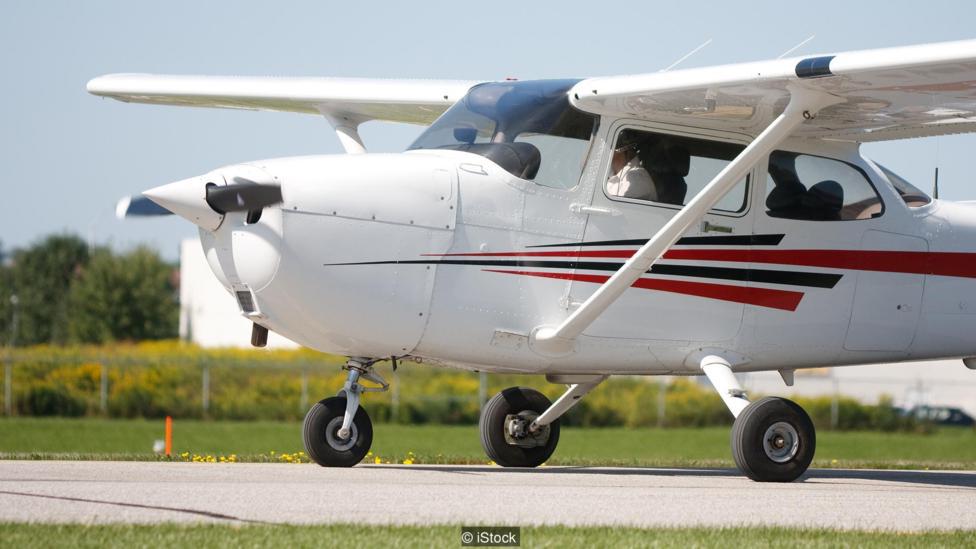
The 172 was built as robustly as possible to ensure it could put up with the rigours of pilot training (Credit: iStock)
“The forgiving nature of the aircraft really does suit it to the training environment,” he says.
Light aircraft might not be updated as often as cars, but 60 years is still a very long time to produce a vehicle that has essentially been unchanged. The only time its production ceased for an extended time was in the late 1980s, when stricter US laws restricted the manufacture of all light aircraft. What is it about the 172 that has made it such a favourite for so long?
One answer comes from the fact that the Cessna 172 is a high-wing monoplane – meaning the wings sit high above the cockpit. This is very useful for student pilots because it gives them a better view of the ground and makes the aircraft much easier to land.
The 172 was based on an earlier Cessna design called the 170. It was one of several Cessna designs that came from a light aircraft boom in the years following World War Two, as many of the companies that had produced tens of thousands of military aircraft now turned their attention to civilian aircraft. Like the 170 before it, the Cessna 172 could take a pilot and three passengers, at a pinch. This looked very similar to what would become the 172, except it was a “taildragger” design, with a wheel underneath the tail.
The design was so clean and aerodynamic that Cessna’s marketing department dubbed it the “land-o-matic”
The 172’s design was so clean and aerodynamic that Cessna’s marketing department dubbed the 172 the “land-o-matic” because it was so easy to fly and land.
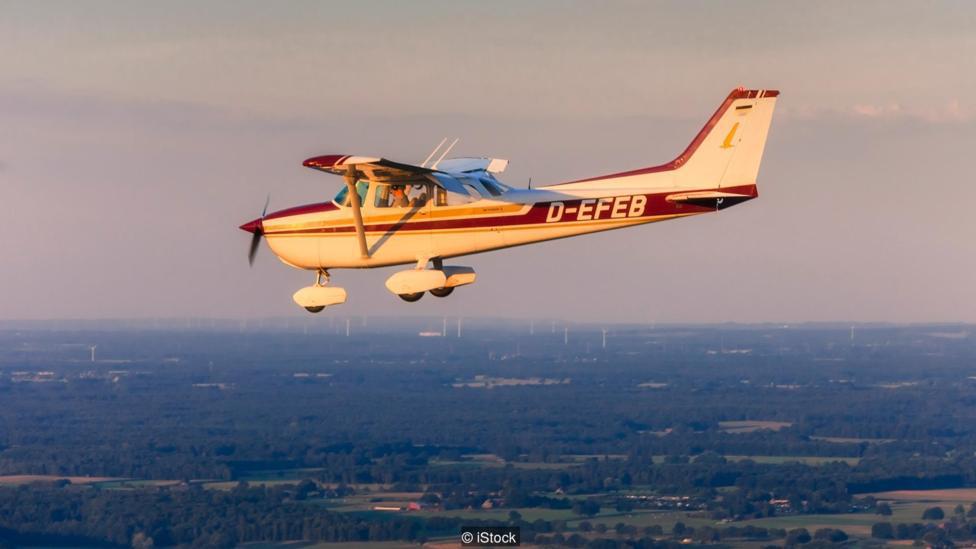
More 172s have been built than any other type of plane (Credit: iStock)
“I think it’s really the robustness that’s been behind the aircraft’s success,” says May. “It’s able to take six to eight to 10 landings an hour, hour after hour,” May says the 172 is often the plane a student will take their first flight in – and it will often take them through their hours until they qualify for a pilot’s license.
“The Cessna 172 was not built to minimum requirements,” says May. “I think they did an exceptional job of looking at the intended role, and actually providing a plane that would surpass those requirements.”
And during its history, that ease of use and reliability has led to some quite remarkable flights.
On 4 December 1958 two pilots called Robert Timm and John Cook climbed into a Cessna 172 at McCarran Airfield in Las Vegas. Their mission? To break the world record for the longest flight without landing.
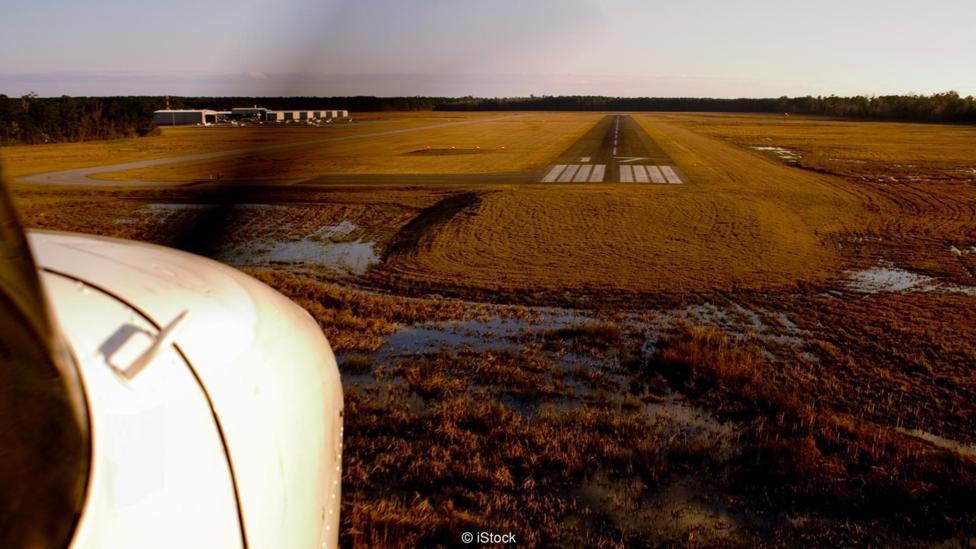
The 172’s excellent view makes it much easier for pilots to land (Credit: iStock)
This would be no easy feat. The previous record, which was set in 1949, was a colossal achievement – the two pilots had flown an aircraft very like Timm and Cook’s Cessna for a total of 46 days – all to raise money for a cancer fund.
The two pilots would need to keep their aircraft in the air for nearly seven weeks, without landing once. According to Jalopnik, the necessary modifications took more than a year to make – and included a small sink so the two pilots could brush their teeth and even bathe. In order to do this, the two pilots had to strip out the back seats so they had room for a mattress. While one pilot flew the plane, the other would sleep. And should they feel the need to shower? A small platform could be extended between the open cabin and the wing strut – allowing the relief pilot to shower out in the open air.
A small platform could be extended between the open cabin and the wing strut – allowing the pilot to shower out in the open air
Refuelling and resupplying the plane with food and water was an even bigger challenge. The Cessna had to fly close to the ground and match the speed of a car carrying supplies for the pilots – the reserve pilot would then lower a bucket so food and water could be put in it and then hoisted back up into the cabin. And twice a day, a fuel tanker drove underneath the Cessna and a hose was raised up to the aircraft. It filled up a belly tank especially installed for the flight, which then transferred fuel into the plane’s normal fuel tanks (and then the belly tank was topped up too). Even driving the resupply vehicles was a challenge – while one person steered, the other matched the speed of Timm and Cook’s Cessna by looking out of the window while keeping their foot on the accelerator. It was a good thing the flight took place in Nevada, with acres of flat, featureless desert outside the city boundaries.
The two pilots kept this up day after day. One week turned to two. Then a month. Then six weeks. When the pair broke the record – seven weeks after they first took off – they decided to make it almost impossible for anyone to beat it. On they flew, for more than two more weeks. When they finally landed, on 7 February 1959, their Cessna had been in the air for 64 days, 22 hours, 19 minutes and five seconds – a record for a refueled flight that still stands today. The aircraft, called Hacienda, is now hanging in the ceiling of Las Vegas’ McCarran International Airport.
It was also a Cessna 172 that teenage West German pilot Mathias Rust used to fly into the Soviet Union – and land in Moscow in an effort to promote world peace. At the height of the Cold War, Rust was able to evade the world’s most formidable air defense system, boasting thousands of aircraft and missile launchers, and landed on a bridge on the edge of Moscow’s Red Square.
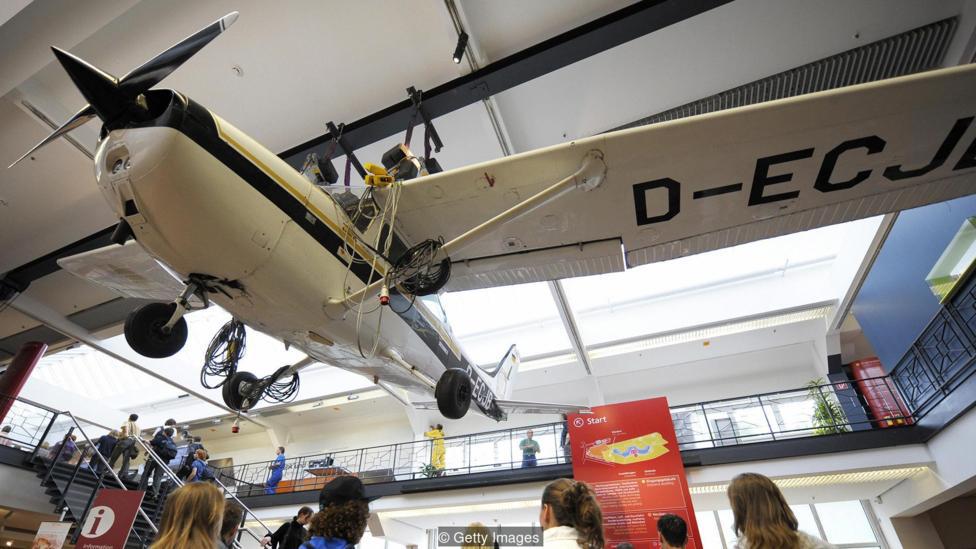
Rust’s famous 172 now hangs from the ceiling of a German museum (Credit: Getty Images)
Rust’s 172, flying low to evade Russian air defense radars, was initially mistaken for a Soviet training plane – and when jet fighters were able to identify it as a Western plane, they found it too difficult to match the Cessna’s slow speed. Rust was able to fly on and make his historic landing in front of surprised onlookers. His French-built 172 was later sold to Japan, though has been returned to Germany, where it is now displayed in the Deutches Technikmuseum in Berlin.
The 172 is still rolling off Textron Aviation’s production lines in Wichita, Kansas, which means that you don’t have to buy a secondhand model should you want one of your own. So if you live in the UK or Europe, you have two options – partially disassemble the aircraft and pack it into shipping crates, or get it flown over the vast expanse of the North Atlantic.
That’s where pilots like Sam Rutherford come in.
Rutherford works for Prepare2go, a company which, among other things, ferries aircraft from factory to customer. He regularly flies across the North Atlantic – including in a 172. Hiring a pilot to make the journey can be about the same cost as getting it shipped, he says. “And with that, you’re going to have to take the wings off, and then put them back on at the other side – and that’s a lot more complicated because you need to get that signed off by an engineer.
“I must have done the crossing about 12 times, including in a helicopter and a microlight. The 172, compared to flying in either of those, is like traveling on British Airways!”
Even with extra fuel on board, the 172 cannot do the entire journey – flying from Newfoundland on Canada’s east coast to the west of Ireland is at least 1,900 miles (3,100km). So the 172 will be taken on a more circuitous route that will see it flying across Canada’s barren north, across Baffin Bay to Greenland, and from there to Iceland and then down to the British Isles.
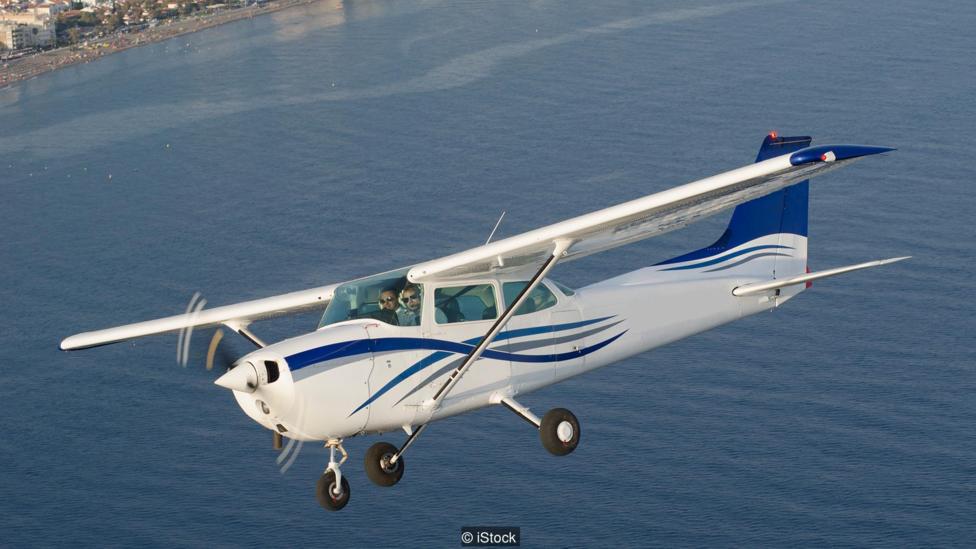
Some pilots ferry 172s across the vast North Atlantic (Credit: iStock)
Rutherford says the cost of hiring a pilot to take an aircraft like a 172 across the North Atlantic is about the same cost as getting it shipped
Taking a single aircraft on such a journey is not for the faint-hearted. “Greenland is staggeringly beautiful,” Rutherford says, but “you really wouldn’t want to end up there. It’s the waves crashing onto three, four, five thousand-foot peaks”.
Luckily, the Cessna’s engine is about as reliable as aircraft engines get. “The engine in the 172 hasn’t changed for 60 years… in terms of tried and trusted, it doesn’t get much better,” he says.
A second-hand 172 – one a few decades old, and with less-than-pristine paintwork but perfectly safe to fly – might cost as little as £25,000, says Rutherford. “If you can afford a BMW or a Mercedes, you can afford a 172,” he says.
Should you want one with a factory-fresh finish, you’re in luck. As far as Doug May is concerned: “We don’t have any intention other than keeping this aircraft in production.”
Credit
Dowling, Stephen. “Future – The Plane so Good It’s Still in Production after 60 Years.” BBC, BBC, 3 Mar. 2017, http://www.bbc.com/future/story/20170302-the-plane-so-good-its-still-in-production-after-60-years.
Advertisements Share this:





